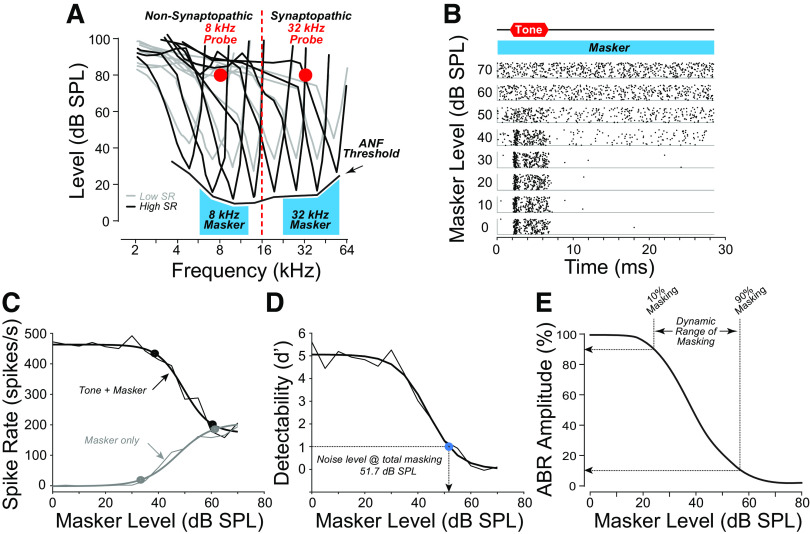Figure 1.
The auditory brainstem response (ABR) masking paradigm. A: schematic tuning curves of high- and low-spontaneous rate (SR) auditory-nerve fibers (ANFs) positioned with respect to the tone-burst probes for the nonsynaptopathic (8 kHz) or synaptopathic (32 kHz) regions, and their respective narrow-band maskers. B: spike-time dot-raster plots from an ANF [noise exposed animal; threshold at characteristic frequency (CF): 43.75 dB SPL at 29.41 kHz; SR: 9.83 spikes/s] responding to the 32-kHz probe at eight levels of the masker, showing disappearance of tone-evoked responses at levels ≥ 60 dB SPL. C: spike rates extracted from the raster show the decreasing response during the tone-on time (tone + masker) and increasing response during the tone-off time (masker only). D: complete masking is defined as the masker level required to reduce the detectability d′ to 1. E: the “dynamic range of masking” is defined as the dB difference between masker levels required to reduce P1 of the ABR by 10% and 90%.

